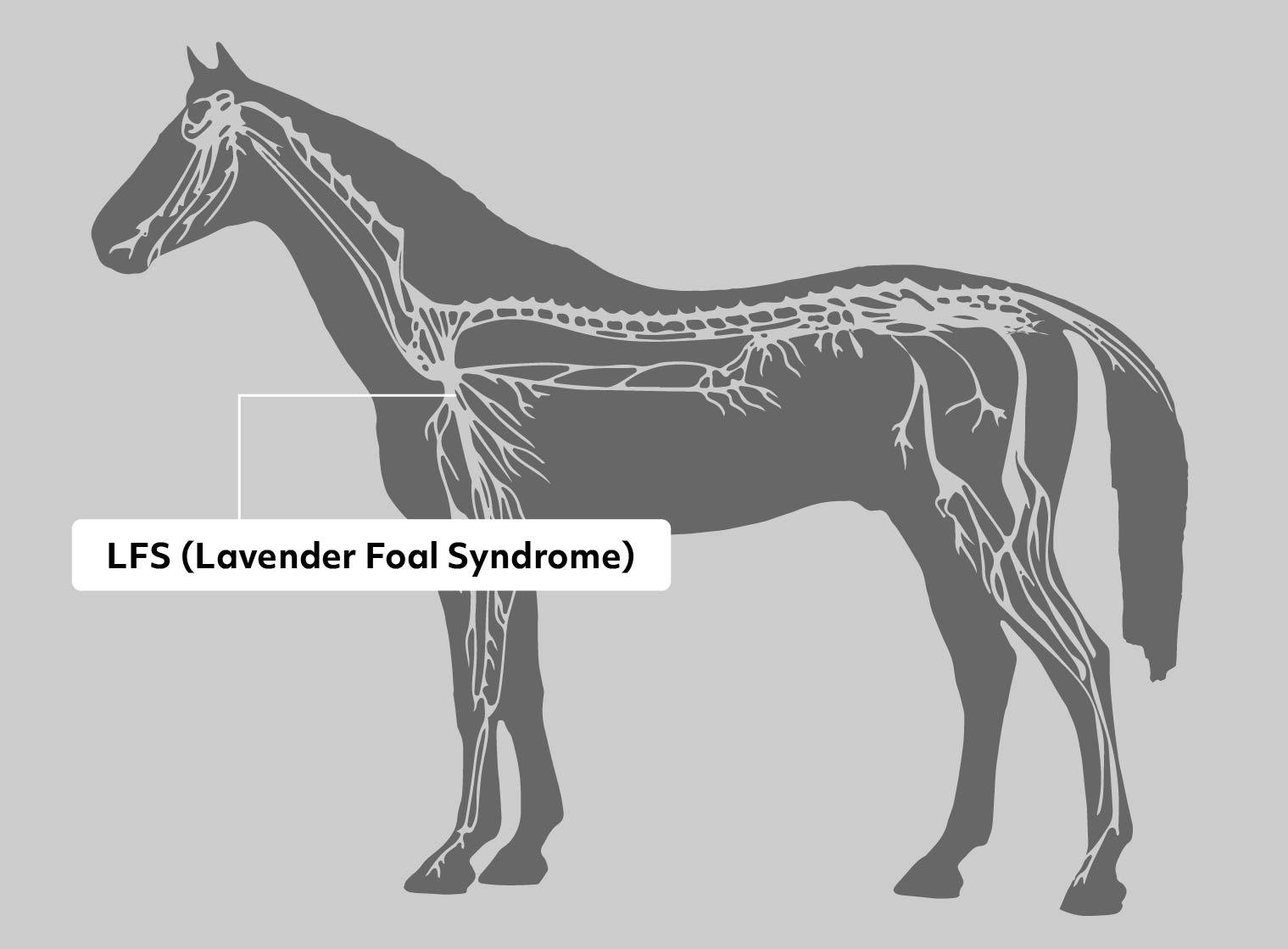Lavender Foal Syndrome (LFS)
Gene or Region: MYO5A
Reference Variant: C
Mutant Variant: -
Affected Breeds: Arabian
Research Confidence: High confidence - Findings reproduced multiple studies
Explanation of Results: lfs/lfs = homozygous for Lavender Foal Syndrome, lethal lfs/n = heterozygous for Lavender Foal Syndrome, carrier n/n = no variant detected
General Description for Lavender Foal Syndrome
Lavender Foal Syndrome (LFS), also known as coat color dilution lethal, is a neurological dysfunction in newborn foals. Symptoms are apparent at birth and include seizures, severe hyper-extension of limbs, neck and back, stiff paddling leg movements, involuntary eye movement and inability to stand or sit upright. The coat usually has a dilute color that ranges in shade from silver to a pale lavender/pink. As there is no treatment, affected foals are humanely euthanized. LFS is an autosomal recessive condition, thus a horse must inherit two copies of the allele (LFS/LFS) to show any signs. Horses with only one copy of the allele (LFS/n) are known as carriers due to their ability to produce affected foals.
Gene Information
MYO5A functions as part of a trafficking complex that serves to move important molecules in pigment cells and neurons. Mutations in humans result in Griscelli syndrome, which is characterized by dilute hair and neurological dysfunction. The LFS mutation is a single base deletion that results in a premature stop codon, and thus a truncated protein.
References
Brooks SA et al., “Whole-genome SNP association in the horse: identification of a deletion in myosin Va responsible for Lavender Foal Syndrome.” (2010) PLoS Genet. 6: e1000909. PMID: 20419149
Gabreski NA et al., “Investigation of allele frequencies for Lavender foal syndrome in the horse.” (2012) Anim Genet. 43: 650. PMID: 22497275
Tarr CJ et al., “The carrier prevalence of severe combined immunodeficiency, lavender foal syndrome and cerebellar abiotrophy in Arabian horses in South Africa.” (2014) Equine Vet J. 46: 512-4. PMID: 24033554
More Horse Health
Foal Immunodeficiency Syndrome
Foal immunodeficiency syndrome (FIS) is a failure in the development of the adaptive immune system. At 3-6 weeks of age, once the maternal antibodies begin to degrade, foals exhibit signs of anemia, diarrhea, and pneumonia. As these foals fail to respond to treatment for infections, they are humanely euthanized at a young age.
Glanzmann Thrombasthenia
Glanzmann Thrombasthenia (GT) is a blood platelet function disorder, resulting from a reduction in the platelet fibrinogen receptor protein. Clinical signs can be characterized by bleeding on the skin or from the mouth/nostril/gastrointestinal mucosas, and may include skin rashes with blood spots under the skin, nasal bleeding, gastrointestinal and gingival bleedings.
Glycogen Branching Enzyme Deficiency
Glycogen Branching Enzyme Deficiency (GBED) is a lethal recessive disorder characterized by seizures, muscle weakness, respiratory failure, and death. Many affected foals do not make it full term and are aborted or stillborn. Carriers (gbed/n) have no known issues.
